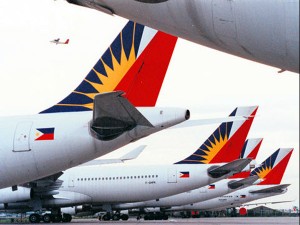Philippine Airlines plans to acquire up to 100 new aircraft over the next five years, marking its most aggressive refleeting effort since the mid-1990s, according to the flag carrier’s new president.
In an interview with the Inquirer, newly appointed PAL president Ramon Ang said the new aircraft would come in the form of regional single-aisle planes like the Airbus A320 and it’s higher capacity variant, the A321, as well as longer range wide-body jets.
“These 100 aircraft will include the ones we will buy to replace the old ones we have in our fleet now,” Ang said.
He declined to give an estimate of how much the new fleet would cost the airline, since pricing with aircraft makers are often subject to negotiations.
In particular, Ang said he would want to do more business with US plane maker Boeing, which only has seven aircraft in PAL’s present 37-plane fleet.
Most of PAL’s wide-body jets, like the Boeing 747-400 and the Airbus A340-300, were acquired in 1994, long before the flag carrier slipped into financial trouble.
The bulk of recent acquisitions came in the form of short-haul A320s.
The massive refleeting effort would be funded by San Miguel’s recent infusion of $500 million in the airline, plus a fresh $500 million in the “near future,” from San Miguel and the Lucio Tan group.
Each company will raise $250 million.
“I believe Mr. Tan would want to maintain his present equity position in PAL,” Ang said.
Ang, who also heads conglomerate San Miguel Corp. which acquired a 49-percent stake in PAL along with management control recently, said that the airline’s new fleet would allow it to resume flights to Europe, the Middle East, as well as the East Coast of the United States.
“We want to fly to New York, Chicago and Florida, on top of our present routes to Los Angeles and San Francisco,” he said, explaining that these US cities have large Filipino-American communities that would be a rich market for PAL.
He added that PAL would also like to fly to London, Rome, Paris, as well as Madrid.
Ang pointed out, however, that PAL’s expansion plans would hinge on the government’s ability to restore the country to “Category 1” status with the US Federal Aviation Administration. The US agency downgraded the Philippines’ status to Category 2 some years ago due to concerns about the local regulator’s ability to enforce safety standards.
Because of this, PAL has been unable to replace the aging B747 aircraft on its lucrative trans-Pacific routes with more fuel-efficient B777 twin-engined wide-body jets, of which it has two in its fleet.
“So PAL will use its resources to help the government regain Category 1 status,” Ang said. “We will help the Civil Aviation Administration of the Philippines where we can.”
With the planned refleeting and the restoration of the Category 1 status, the PAL chief said the airline would have no problem in regaining market share that was lost to budget airlines in recent years, as well as boosting revenues and earnings.
